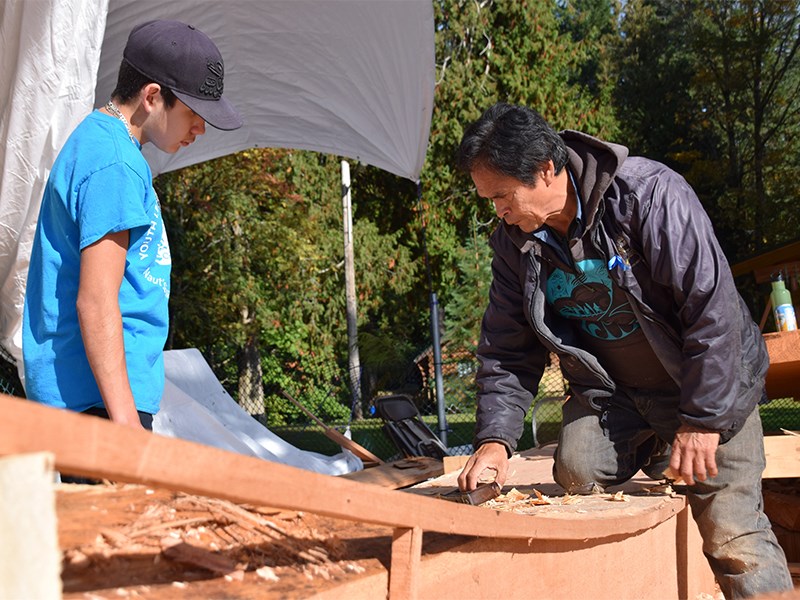Another meaningful event coinciding with the Hɛhɛwšɩn (The Way Forward) Reconciliation Canoe Journey Project occurred in the early morning hours of October 28. A traditional steaming took place for one of two canoes being carved at its Willingdon Beach location.
A second, smaller canoe will be steamed next.
Brooks Secondary School students Matthew Louie, 13, John Dominic, 13, and Dakota Gustafson, 15, and École Côte-du-Soleil student Menat’they Blaney, six, were asked to be part of the project, according to Pallen.
“Two of them, John and Matthew, have been drumming and singing and really involved in cultural activities,” she said.
The three students agree that the project allows them to delve into their culture by carving, building and making a canoe while learning stories of their heritage.
“This could be a once-in-a-lifetime opportunity, so if you don't take it now, what happens if you don't get another chance later in life?” said Dominic, who began to drum and sing last year.
Dominic said he did not see the point of it at first. That outlook has since changed, he added.
“It really lifts my spirit to join in,” said Dominic. “Once you do it, it just frees you; you don't think about any of the negativity in your life. It's all positive energy around you.”
Even the cuts and scars of carving are important in the lessons of his culture, according to Louie.
“The number of cuts you get are the stories you can tell to your future children,” said Louie. “I'm dragging the culture and the teachings out of it and taking it into me so when I get older I can pass that on.
The reconciliation project has been an amazing opportunity to make a canoe as part of her school education, said Gustafson.
“You get to go into your culture,” she said. “It's like going back in time to remember that people used to do that.”
The purpose of steaming is to soften the wood so it can be shaped for more stability in the water, according to Phil Russell, one of the project’s principal organizers. In a traditional method, rocks are heated to steam water that is in the bottom of the canoe, then tarps are used as a seal over the canoe, said Russell.
“The steaming process took only about one hour, which surprised me,” said Russell. “I thought it would take a lot longer.”
Near the end of the process, Russell said car jacks placed at each end of the canoe were turned slowly and the centre of the canoe began to spread, gaining six-inches in width.
The project is a collective work to honour the teachings and territory of Tla’amin Nation and a community expression for moving forward in reconciliation, according to Pallen.
Through the canoe project and path to reconciliation it represents, Pallen said Tla’amin people and their land are being honoured. It was important to bring youth into the experience, she added.
“They're really humbled and actually quite proud of themselves,” said Pallen.
Tla-o-qui-aht First Nation master carver Joe Martin has been leading the team of carvers. He said he looks forward to the next two weeks when the smaller canoe will be finished and believes it is his responsibility to share knowledge taught to him by his father and grandfather. Now he passes on those lessons to the next generation.
“It’s a responsibility,” said Martin. “I wouldn't feel very good if I just died and didn't teach anybody about this.”
Sharing between the master carver and more experienced, older carvers on the team and the young apprentices has been reciprocal, according to Martin. He said he has learned a lot from the youthful innocence of Dominic, Louie, Gustafson and Blaney.
Hɛhɛwšɩn Reconciliation Project is scheduled to be completed on November 18.



